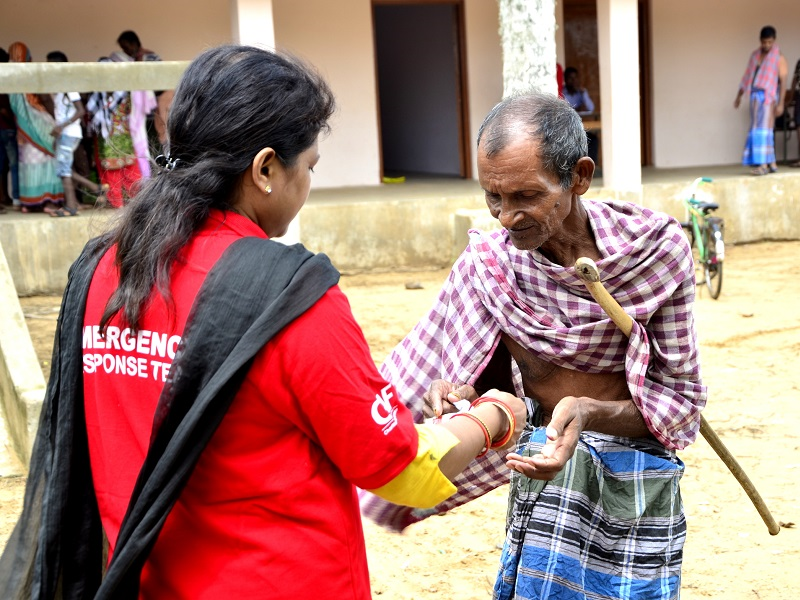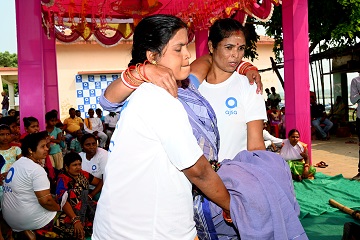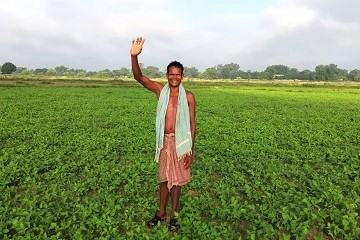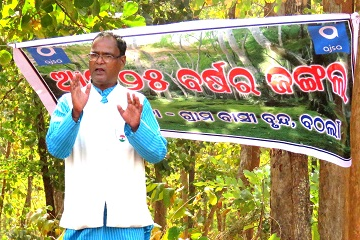
Climate Change and DRR
A closer look at Humanitarian Response programmes
Since 1989 AJSA has been responding to disasters and climate extreme events in India. We are focused on saving lives and alleviating human suffering. When disaster strikes, we respond by providing quality life-saving assistance and essential protection for those most affected. We help them get the food, water, shelter and other essential supplies they need to survive and we work with people on their way to self-sufficiency.
Additionally, AJSA reduces morbidity and mortality by providing targeted health interventions such as: Emergency hygiene, hygiene promotion, disease surveillance, immunization campaigns, epidemic response, curative nutrition programmes, primary health services. Aftermath of a humanitarian crisis, we remain on the ground helping to rebuild livelihoods and infrastructure so that communities are better prepared for future crises.
Through long-term development programs, we help communities rebuild after disruptions, become stronger from disasters and better prepared to cope with shocks and uncertainties.
Our goal is to contribute to lasting improvements in the lives of vulnerable communities through the implementation of Humanitarian response, Disaster Risk Reduction and Climate Change Adaptation programmes.
Our 3 Approaches

Humanitarian Response

Disaster Risk Management

Climate Justice
Climate change are hitting many of the world’s poorest people first, and hardest and exacerbating poverty. It is also threatening the access to basic services like water, health, nutrition and environment. Although the global narrative is highlighting the responsibility of countries to reduce their emissions and carbon footprint, in a developing country like India, the impact of climate change is profoundly being experienced by primary producers engaged in agriculture. Climate is a direct input to agricultural productivity. Hence, agriculture has been a major concern in the discussions on climate change. Without adaptation climate change is generally detrimental to the agricultural sector; but with adaptation, vulnerability can largely be reduced. The shift in rainfall patterns, extreme weather events and the resultant increase in the intensity and frequency of hazards has already started creating pressure on the ecological and socio-economic systems. Climate change still holds the potential to exacerbate inequality and hamper economic growth.

AJSA is working with communities in vulnerable places to develop solutions that help people adapt to the impacts of climate change, respond to disasters, and build resilience to extreme weather events.
AJSA has over 34 years of rich experience and professional expertise in different Disaster Risk Reduction and Climate Change Adaptation activities. AJSAs expertise includes – HRVCA analysis, PRA exercise, Eco System management, preservation and restoration of biodiversity, Promotion of Disaster resilient sustainable livelihood models, climate vulnerability assessment and adaptation, Promotion of low carbon technologies, promotion of climate resilient crop varieties etc. Through its presence and development interventions the organization has been able to get remarkable commendation from the local public for its great contribution in Climate Change, Biodiversity, climate-smart agriculture and Natural Resource Management related interventions.
Following its 360 Degree Community Development Approach, AJSA strives to support not just primary producers but also Community-Based Organizations which are women-led. Finally, realising the importance of convergence and a systems approach to reduce the risk of disasters and climate change, AJSA has been effectively working towards strengthening decentralized planning and linkage with various government departments.

Our Major Initiatives
Glimpses of our work
Key Impact

Highly Vulnerable People Received Emergency Aid

Volunteers Trained on Disaster Risk Management

Raised for Disaster Resilient Infrastructure through Government & Aid Agencies

Village Level Disaster Management Committees Formed

Village Level taskforces Trained

Hectares Community Forestry created by Indigenous Communities
 En
En
 Fr
Fr
 Ge
Ge
 It
It



































